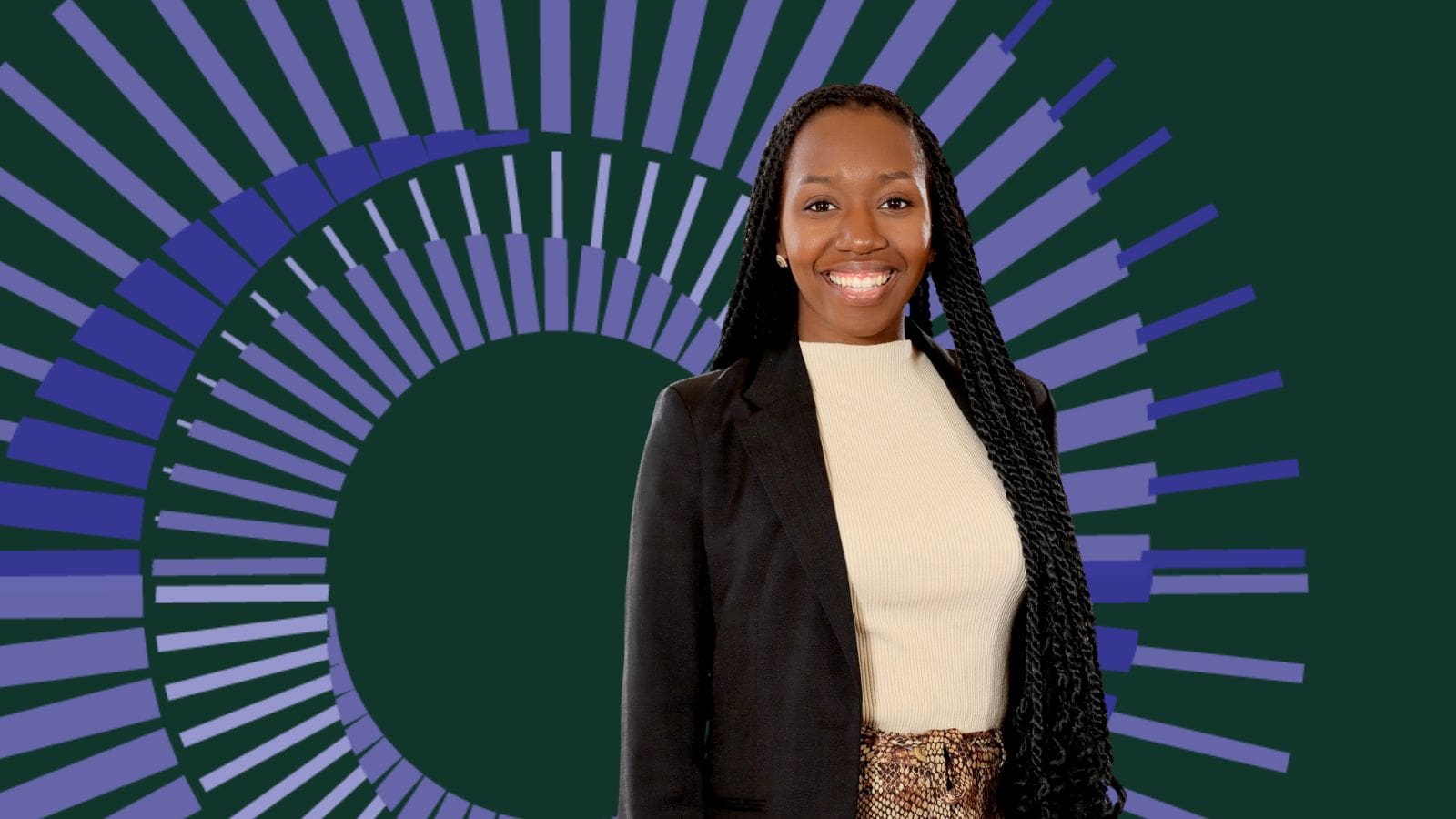
NAM program officer Olufunmilayo Chinekezi
NAM program officer Olufunmilayo Chinekezi on trust, collaboration, and what it takes to do community engagement well.
National Academy of Medicine (NAM) program officer Olufunmilayo Chinekezi has spent her career advancing a community-first approach to health. As a co-architect of the NAM’s Climate Communities Network (CCN), she helps lead a national effort to support local climate solutions through long-term relationship-building and meaningful collaboration.
In this conversation, Chinekezi shares what community engagement looks like in practice, why building trust is key, and why she’s optimistic about the future of community-led change.
The following interview has been edited for length and clarity.
What does true community engagement look like to you and what are the biggest misconceptions institutions still have about it?
Chinekezi: Community engagement often gets confused with community service , but they’re not the same thing. Community service falls on the spectrum of community engagement but can sometimes refer to one-off projects or be focused only on a community’s deficits. True or optimal community engagement is collaborative, dynamic, and consistent.
It should also never be solely extractive, but mutually beneficial and bidirectional instead. For example, community engagement should go beyond just getting the community’s input and participation on a project. It’s important to establish and sustain trusted relationships.
Community engagement efforts should be informed by the community at the very least but ideally, they should be community-driven. Finally, community engagement must be responsive. Communities change all the time. Institutions have a responsibility to listen and adapt.
What does it take to build lasting trust with communities?
Chinekezi: Flexibility is huge. For example, you shouldn’t go into a historically marginalized — or any — community and tell them how it’s going to be. You may have a plan, but if you start hearing something different, you need to be willing to pivot. That pivot says: “We hear you. We’re here for you.”
Transparency is another critical part of trust. If we have institutional constraints, we name them. If we’re not the right people for a conversation, we say so. It’s about mutual respect and responsiveness, not control.
Can you share an example from the Climate Communities Network where this bidirectional engagement really came to life?
Chinekezi: One example is how we built our governance and compensation structures. Early on, we had some ideas from past work, but we brought those to the network and said: “What do you want this to look like?”
We had discussions, sent out a survey, and ultimately the members shaped those structures. That process ensured the network members had ownership, and it built trust. Another example: when we’re considering bringing in a new strategic partner, we always check in with the network first. If they say no, we back off. It’s their space and we honor that.
The NAM recently published a feature story about the CCN that does a great job at highlighting how we’ve approached our work together since day one.
What strategies have been most effective in fostering climate resilience at the community level through CCN?
Chinekezi: Collaboration has been huge. One of the things we hear most often from our network members is how grateful they are to connect with others doing similar work. We try to foster that by asking who they want to hear from and doing the legwork to build those connections.
We’ve also learned to take our time. We pivot when we need to, and we don’t rush. This work takes patience and persistence. And we practice radical listening—not just hearing people but trying to deeply understand. That helps us show up in ways that are actually supportive.
How do you balance the urgency of climate threats with the slower work of community building?
Chinekezi: It’s not easy. We try to be honest about our capacity, both with ourselves and with the network. When urgent things come up, capacity shifts. But we stay in touch. We offer support. And we’ve also built in space for grounding: at our meetings, we check in with each other, do mindfulness exercises, even just sit in the grass together. Those moments matter. That’s what builds resilience.
You’ve described your work as community-led rather than community-informed. What’s the difference?
Chinekezi: Both are important, but when a community leads the work, it helps mitigate unbalanced power dynamics. It also makes the work more sustainable and more impactful. They know their communities best. Our job is to support them, not control them. We describe our work as being community-led because we take things a step further from gathering input and the communities we work with have the final say to whatever extent is possible. A community-informed project may be limited to inviting the community to provide feedback on a meeting agenda, whereas a community-led project is more all-encompassing: yes, involving that feedback step, but also the power to decide what the final agenda includes or doesn’t and playing a role in the implementation of that agenda. The difference lies in the autonomy a community has to make decisions versus only being invited to offer suggestions.
What advice would you give to those who want to engage more deeply with communities but don’t know where to start?
Chinekezi: Be resilient. Don’t give up if one door closes. Understand the history of the place you’re working in. Build relationships, even if they take time. And learn from what’s already out there. For example, I helped develop a toolkit called The Principles of Trustworthiness (PoT) at the Association of American Medical College’s Center for Health Justice. The ten Principles were endorsed by community stakeholders and candidly reflect much of what I’ve shared in this conversation (e.g., “You are not the only experts”, “If you’re gonna do it, take your time, do it right”).
The PoT is for institutions that want to demonstrate they’re worthy of their community’s trust. This kind of resource can help guide your first steps. In particular, there is actually a PoT Toolkit that institutions can use to apply the Principles to their work, and a paper I co-authored that describes the step-by-step process of developing the PoT Toolkit as well as its implications for community engagement.
What gives you the most hope about the future of community-driven climate and health solutions?
Chinekezi: There’s a hunger for innovation. People are asking, “Why not try something new?” Youth-led efforts especially inspire me—they’re creative, determined, and pushing the conversation in exciting directions. That curiosity is what gives me hope.

